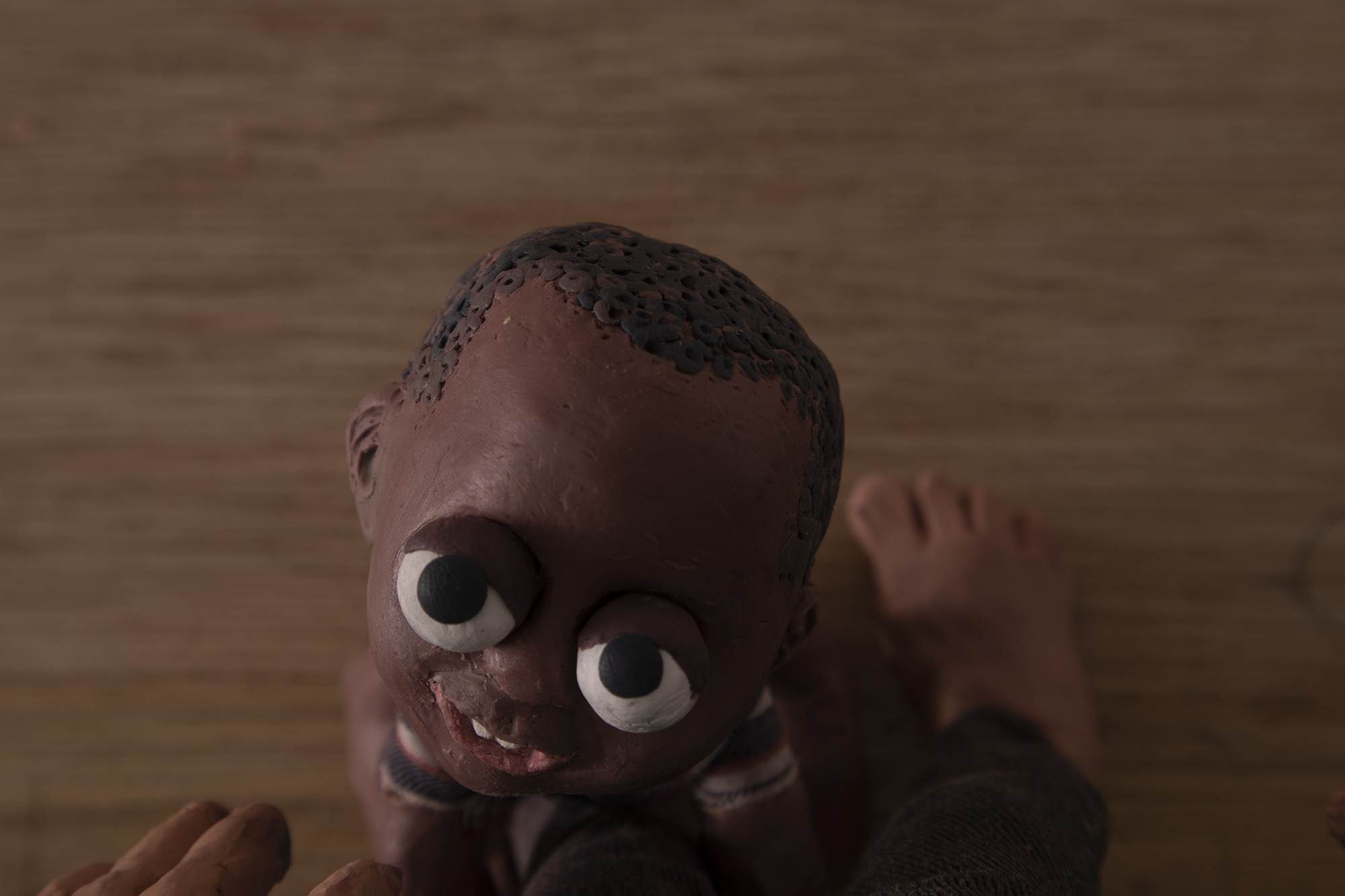Nominee Drempelprijs Social Practices
From February 2019 till July 2019, I volunteered at Kyampisi Childcare Ministries (KCM), a child empowering organisation in Kampala, Uganda. Within my fieldwork at Kyampisi, I used drawing as a tool to become familiar with the unknown surroundings and break the estranging difference between the localities and me. I simultaneously wrote about my intense experience with the children in the care of the organisation. ‘Onno Mama Wange’ is an animation visualising my experience with two children from KCM- Muwanguzi and Shami.

“Onno Mama Wange” means “This is my mom” in Luganda (the language of central Uganda). The little girl Shami often treated me as the centre of her trust. She spoke these words one of the days I was drawing portraits in KCM’s care house. I became overwhelmed by being told the translation. The claymation presents this reality of my stay in Uganda and my realization of ubiquitous emotions. In the childlike aesthetic of my animation story, I have tried to visualize how touch and trust can alleviate an awareness of pain and make one discover deeper bonds despite differences.

The clay puppets are a continuation of the sculptures I started making after coming back from Uganda in July 2019. Clay as a material allows me to recreate the tactility of our (children’s and mine) lived moments. It suggests mass, weight, movement and most importantly, touch. Within the video, I have switched between the backgrounds and hues to denote my warmer and colder (bodily and mental) presence in Uganda and the Netherlands, respectively.


I base my research on the theory of rasa- an Indian theory of aesthetic experience. Rasa literally means savour or taste. The stages within rasa correspond to my own perception of children’s situation of isolation, abandonment, indifference, pain and also the joy, motherhood, care, empathy and love that I shared with them as their temporary caretaker.
According to rasa concept, I could feel all these sentiments as my own due to my prior self-experience of it. By the aesthetic reconstruction of these sentiments, I wish to repeat the same cycle of invocation and emotional experience in my audience. The animation story aims at this emotional transference and treats the role of the audience equal or more important than the work itself.

The narrated story also depicts my struggle with the sociological approach to ethnography. In this project, I take a stance different than the post-modernist, post-structuralist necessity to engage with the sociological identities involved or the preoccupation with the politics of the work. Rather, I wish to speak about things that make us inseparable as humans.



